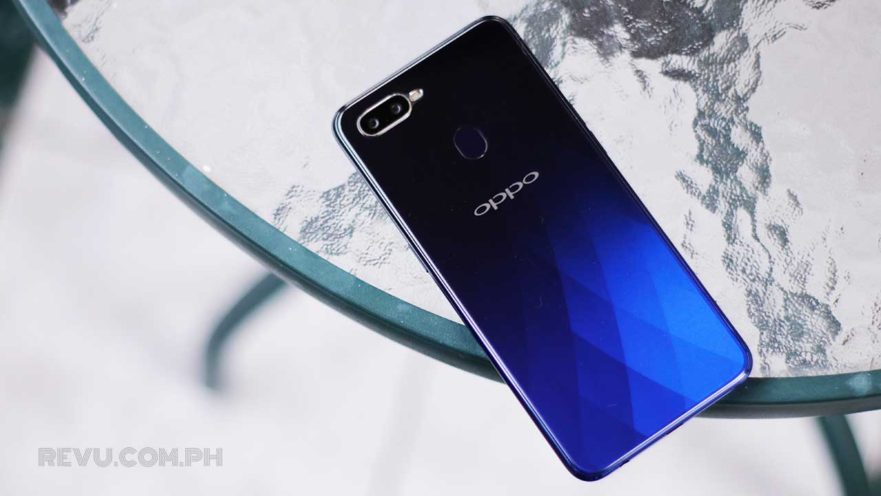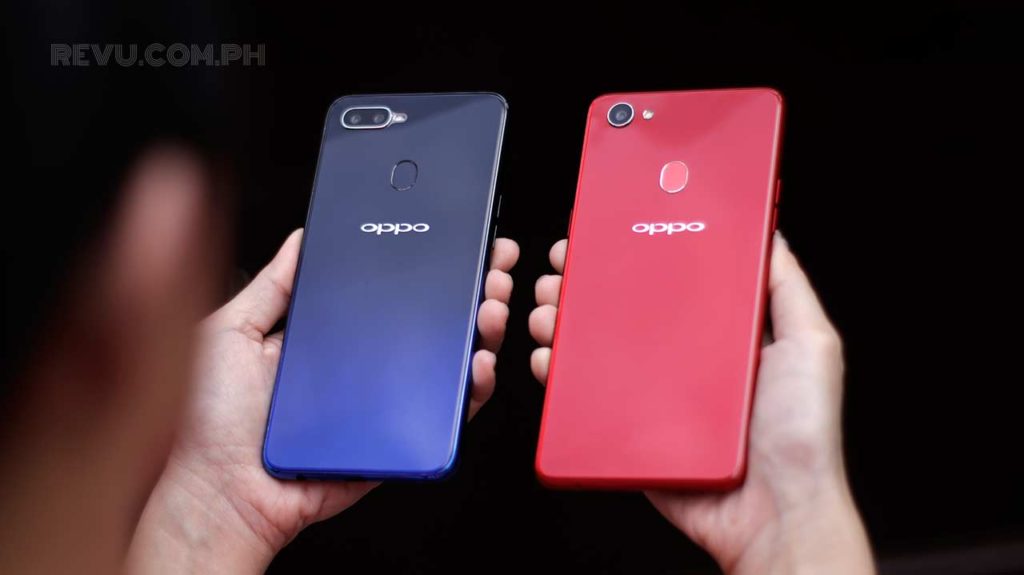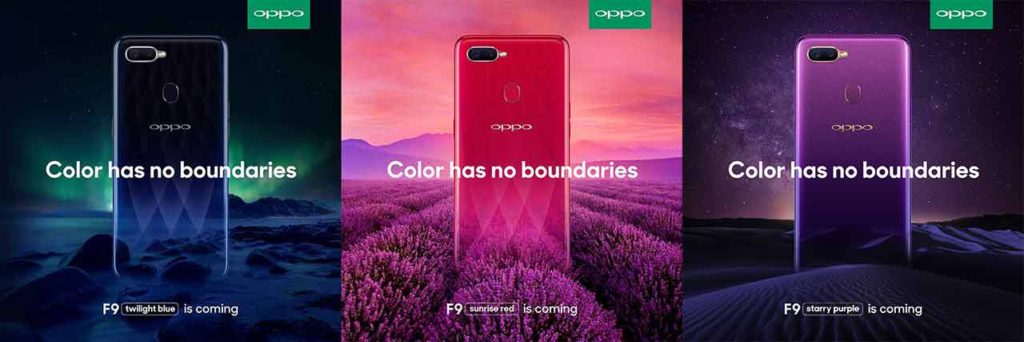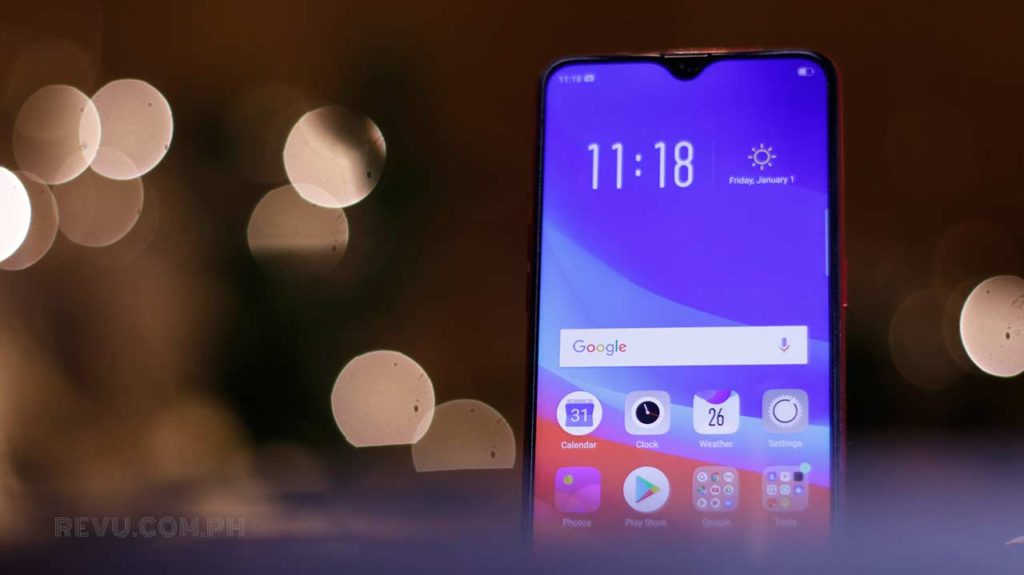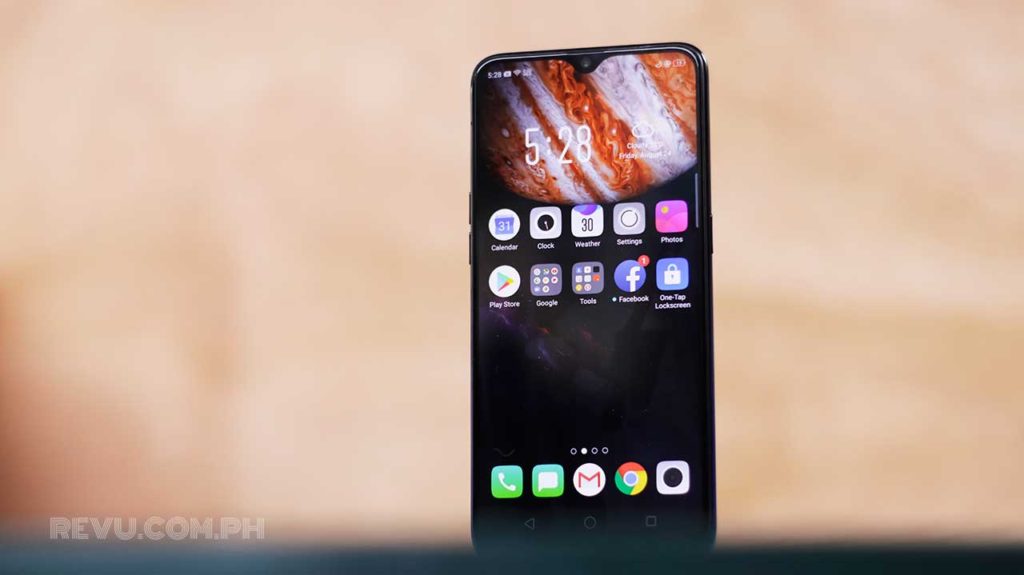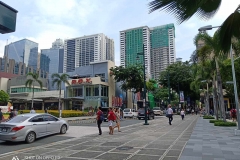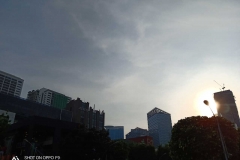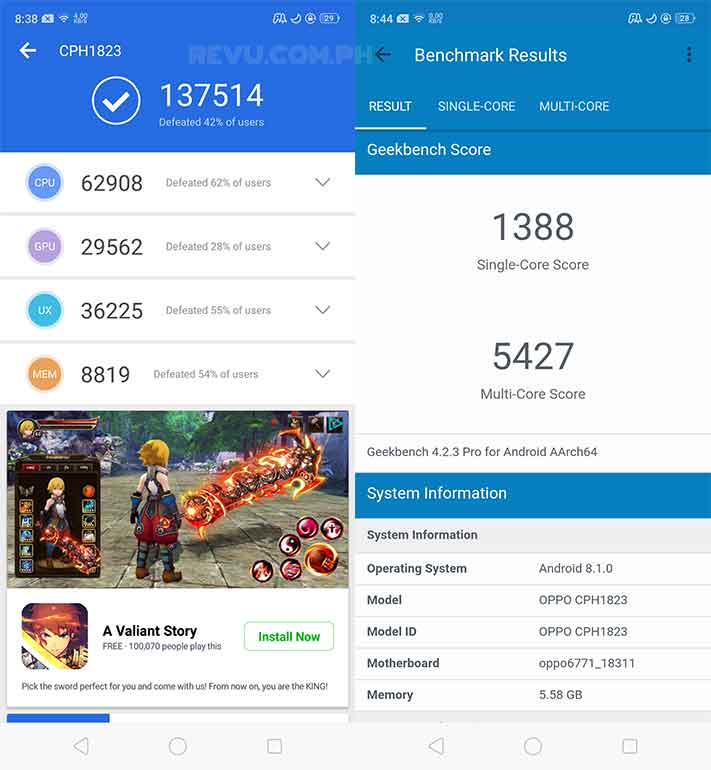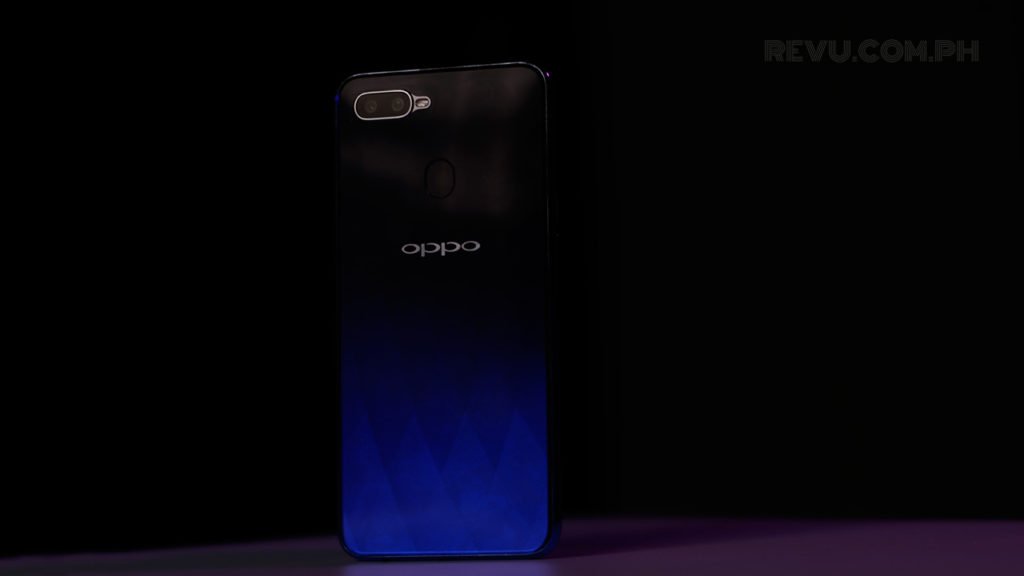The OPPO F9 launched in the Philippines last week. It’s already up for preorder locally starting today, August 24, with the first units expected to arrive in stores from August 30.
Like the model before it, the OPPO F7, the F9 will retail for P17,990 (around $337) at launch, as the F7 has previously dropped to a more palatable P14,990 ($281).
Of course, between the two, it’s the F9 that should prove more appealing, with the least obtrusive notch we’ve seen on an OPPO device; dual cameras at the back; and proprietary VOOC fast charging that can bring the battery to at least 50-percent capacity after just 30 minutes plugged in.
The fact that we get more interesting color choices this time around — Sunrise Red and Twilight Blue (and Starry Purple sometime after the first two hit local retail) — is icing on the cake. And one that has proven to be quite appetizing, despite the relatively short amount of time between this OPPO and the one that came before it (which we loved, to be clear).
SEE ALSO: OPPO F7 Youth gaming review: High-end gaming for less
Yet the OPPO F9 isn’t for a lot of folks. It’s not for people who dislike the notch (however small) and loud, audacious designs — and certainly not for those who’ve bought the F7 recently.
But for those in the market for something that looks and performs as a phone costing more than its worth, the F9 is as good a choice as any. It improves on its already excellent predecessor in ways one would appreciate — and really, that’s all we could hope for.
Hardware
Physically, the OPPO F9 is about the same size and weight as the older model. The weight distribution is generally balanced; the glossy plastic body is smooth to the touch; and the corners are also rounded. Both the F7 and F9 feel much the same in the hand — which is to say they feel nice.
In terms of port and button placement, OPPO has conveniently opted against making any major changes, leaving the F9 with the same layout found on the F7. That means the power button is on the right-hand side; the volume keys are located along the left cheek; and the mono speaker, charging port, and headphone jack are all present at the base of the phone.
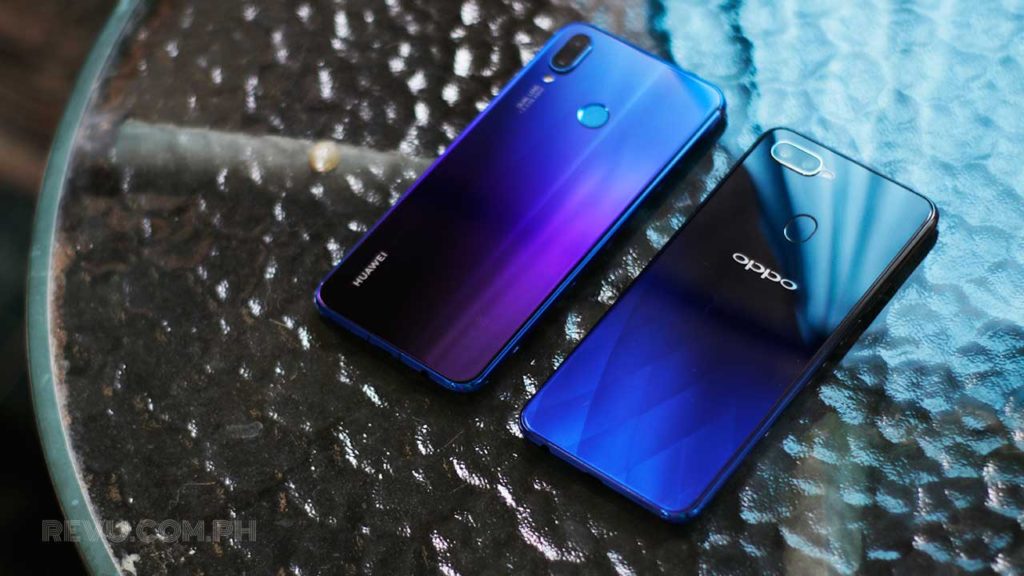
The gradient effect on the OPPO F9 is subtle enough that you and the people around you won’t see it all the time, unlike the color-changing backs of certain Huawei devices, such as the Huawei Nova 3i.
Moving to the back, you’ll notice one major thing: The gradient coloring with a repeating diamond pattern is only visible when viewed at an angle. The effect is subtle enough that you and the people around you won’t see it all the time, unlike the color-changing backs of certain Huawei devices.
We haven’t seen the Starry Purple unit in person, but we imagine that it’s the loudest of the three OPPO F9 variants that will be available in the Philippines.
There’s also a significant change to the rear to make room for an extra camera next to the flash module. The main sensor is 16 megapixels and sits behind an f/1.8 lens that can snap bright photos in low light, without having to boost the camera’s sensitivity, which adds noise. The secondary camera is 2 megapixels and captures depth information to help blur out backgrounds when shooting in Portrait mode.
Coming from previous designs, the front of the OPPO F9 introduces a couple of big, though not immediately visible, hardware improvements.
The first is also the most obvious: The notch at the top is now only a third of its predecessor’s size, and the 6.3-inch screen is ever so slightly bigger (although honestly, it doesn’t look much different), thanks to the smaller chin. It’s small enough that OPPO doesn’t even bother hiding it with black bars when using apps in full-screen mode.
The company calls its nearly borderless design “waterdrop screen,” and it’s safe to assume that we’ll be seeing more of it on future devices from the company. This new design has resulted in a higher screen-to-body ratio compared to the F7, which makes the larger display just a touch more manageable.
As for the screen itself, the OPPO F9 uses an improved LTPS-IPS LCD panel that appears a bit brighter, more colorful, and more vibrant. Viewing angles are wide, while black levels can look nearly perfect for an LCD.
The touchscreen is responsive, too, and we haven’t had any problems playing PUBG Mobile and NBA 2K18, among other games that use onscreen controls, on our unit. It should keep a lot of owners happy, particularly those who play graphics-intensive games and watch a ton of content on the go.
Admittedly, we weren’t expecting OPPO to make notable strides in the display department. But thankfully, we were proven wrong, as the F9 has indeed upped its picture quality even without increasing sharpness and clarity.
Cameras
For the most part, the OPPO F9 is a solid shooter that can produce some very nice images with its back-facing cameras, especially in well-lit environments such as outdoors during the day. Fine details look sharp enough, and colors look close to spot-on. Indoors and night shots are reasonably good, though the system can struggle a bit with artificial light.
READ ALSO: OPPO A3s vs. Xiaomi Redmi 6A: Which is the better-value phone?
As mentioned earlier, the F9 adds a second camera for blurring the background while keeping the subject in sharp focus. Portrait mode on this device works especially well compared to the F7 and previous models.
Do note, however, that you can only use it in places with enough light, and the camera may require you to move farther away from your subject to get the best results, which can make macro shooting quite difficult.
[sciba leftsrc=”https://www.revu.com.ph/wp-content/uploads/2018/08/OPPO-F9-sample-picture-auto-mode-review-Revu-Philippines-a.jpg” leftlabel=”Auto mode” rightsrc=”https://www.revu.com.ph/wp-content/uploads/2018/08/OPPO-F9-sample-picture-portrait-mode-bokeh-effect-review-Revu-Philippines-a.jpg” rightlabel=”Portrait mode” mode=”horizontal” width=””]OPPO F9 daytime shots: Auto mode vs Portrait mode (with bokeh effect)
[sciba leftsrc=”https://www.revu.com.ph/wp-content/uploads/2018/08/OPPO-F9-sample-picture-auto-mode-nighttime-review-Revu-Philippines-a.jpg” leftlabel=”Auto mode” rightsrc=”https://www.revu.com.ph/wp-content/uploads/2018/08/OPPO-F9-sample-picture-portrait-mode-bokeh-effect-review-nighttime-Revu-Philippines-a.jpg” rightlabel=”Portrait mode” mode=”horizontal” width=””]OPPO F9 nighttime shots: Auto mode vs Portrait mode (with bokeh effect)
The primary camera setup also comes with automatic scene detection to enhance the point-and-shoot experience and photo quality. It’s particularly helpful when shooting scenes indoors and in low light.
More pictures captured on the OPPO F9
As a selfie camera, the F9’s performance is expectedly good in both day and night conditions. Faces tend to look bright and detailed, and the smart Beauty mode makes skin appear smooth and largely blemish-free.
[sciba leftsrc=”https://www.revu.com.ph/wp-content/uploads/2018/08/OPPO-F9-sample-selfie-picture-auto-mode-no-ai-review-Revu-Philippines-a.jpg” leftlabel=”Without AI” rightsrc=”https://www.revu.com.ph/wp-content/uploads/2018/08/OPPO-F9-sample-selfie-picture-with-ai-review-Revu-Philippines-b.jpg” rightlabel=”With AI” mode=”horizontal” width=””]OPPO F9 nighttime selfies: Without AI vs with AI
MediaTek Helio P60
Powering the OPPO F9 is the same MediaTek Helio P60 found in the OPPO F7 and F7 Youth. This time, though, you get 6GB RAM for the same cost as the baseline model of the F7, which features 4GB. A generous serving of RAM contributes to a better multitasking experience, since apps don’t always have to be reloaded each time you open them.
Notably, this phone stands as one of the few options in the under-P20,000 (under-$375) range that offers 6GB of memory. In practice, it does perform admirably even if burdened with a heavy workload.
We’ve discussed the gaming performance of the Helio P60 in detail, and our verdict stands for the F9. This phone can game with the fastest devices at its price point. It can play the most demanding titles around, such as PUBG Mobile, NBA 2K18, and Darkness Rises at consistently solid frame rates, with just a little choppiness here and there and only when the action gets too frenetic.
SEE ALSO: Fortnite for Android: Supported devices, minimum requirements
PUBG Mobile, in particular, can make even the most powerful phones on the planet sweat if you enable all its graphics options. The most fluid gameplay we got out of the OPPO F9 — a very stable 28 frames per second on average, according to the GameBench benchmark tool — was with the detail setting set to Balanced and frame-rate option capped at High.
Our unit managed 35 frames per second in our NBA 2K18 test at High settings, which is more than enough for a satisfying playthrough. Darkness Rises, meanwhile, averaged 37 frames per second with the detail settings ramped up.
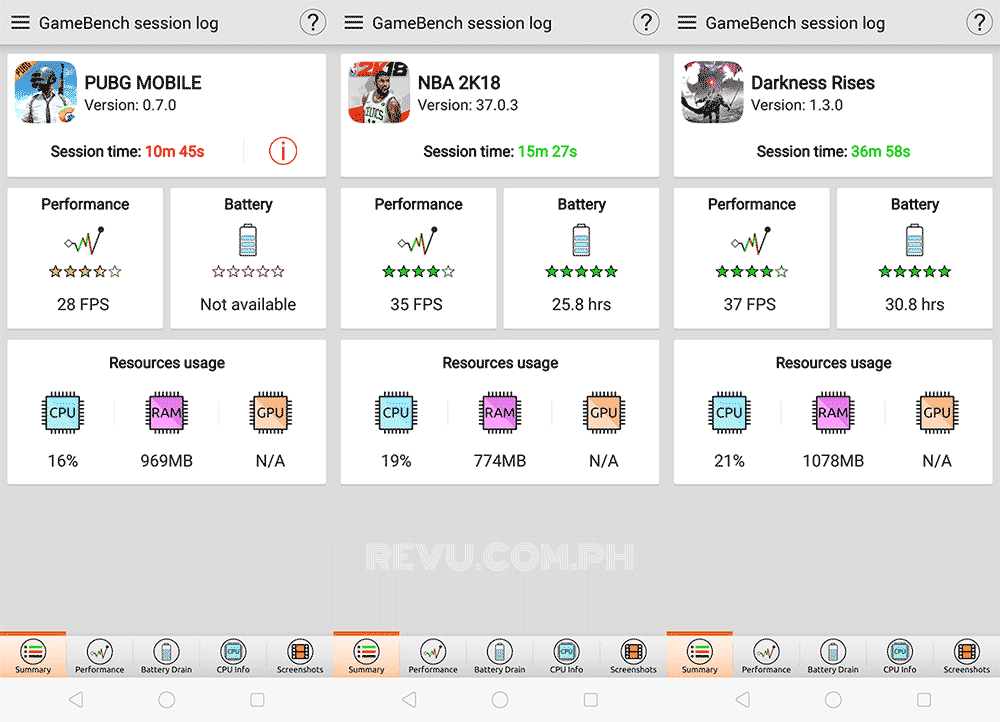
The OPPO F9 runs PUBG Mobile, NBA 2K18, and Darkness Rises at consistently solid frame rates, as shown in our GameBench results.
As expected, the OPPO F9 runs like a top-tier handset in the midrange and should be able to handle any game or app you put in front of it. Multitasking performance is especially a highlight courtesy of the bump in memory to 6GB.
Gaming on the OPPO F9
Battery and charging
For all-day battery life, OPPO has equipped the F9 with a 3,500mAh battery that supports VOOC fast charging over the older microUSB standard. VOOC is OPPO’s own solution for bringing the battery back to full capacity in record time using the bundled 20-watt charger and nothing else.
That said, you can only take advantage of it if you use the high-powered charger OPPO provides. Lose it, and you’ll have to pay extra for another, or lose the feature altogether. And trust us when we say you wouldn’t want that.
OPPO has equipped the F9 with a 3,500mAh battery that supports VOOC fast charging. Typically, we’re able to get our unit from zero to 50-percent capacity in around 30 minutes.
Typically, we’re able to get our unit from zero to 50-percent capacity in around 30 minutes. A full charge usually takes an hour and a half even when the battery is fully depleted, which is much faster than we’re used to seeing.
A shorter charging time is something we expect out of newer smartphones in the midrange and premium categories, and the OPPO F9 actually delivers and goes beyond expectations.
The OPPO F9 TVC, which stars Joshua Garcia and Julia Barretto (JoshLia), harps on about the phone’s ‘5-minute charge, 2-hour talk’ feature
Final thoughts
The F9 might not be what last-gen owners are expecting from a sequel, but OPPO offers a great refinement of an already outstanding product.
It’s got gradient coloring with pattern work, as well as a less-attention-grabbing notch; the screen looks better; the cameras take nicer portrait shots; there’s more RAM for the same price; and fast-charging tech comes right out of the box, too.
OPPO has delivered yet another strong contender in the mid-tier segment, one that has improved well beyond what is expected of its namesake.
OPPO F9 specs
- 6.3-inch LCD display, 2,340 x 1,080 resolution (19.5:9)
- Octa-core MediaTek Helio P60 processor
- 6GB RAM
- 64GB expandable memory (up to 256GB microSD card)
- Dual 16- and 2-megapixel rear cameras with LED flash
- 25-megapixel front camera
- Fingerprint sensor (rear-mounted)
- 3,500mAh battery with VOOC Flash Charge
- Android 8.1 Oreo
Share this Post


